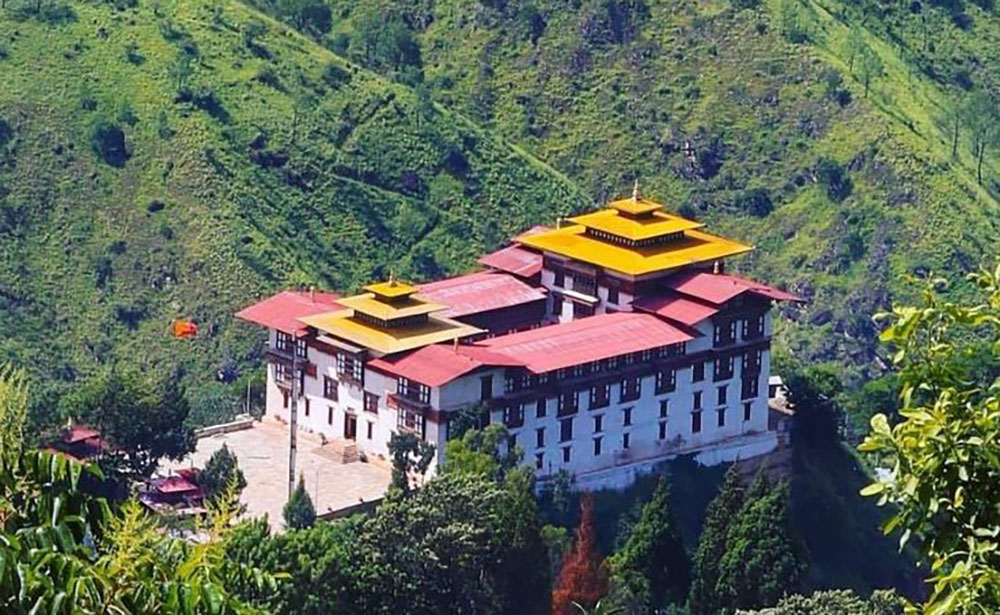
… to develop the dzongkhag in the 13th Plan
Kanglung—Trashigang dzongkhag will be promoted as a community-based ecotourism destination in the 13th Plan. This is the dzongkhag administration’s plan for the next five years.
While the dzongkhag has rich history, culture and biodiversity, issues with accessibility and other infrastructure is the bottleneck for it to realise its full potential, mainly ecotourism business for international, regional and local tourists.
Following the formation of a tourism development committee, the administration is preparing tourism products to develop the dzongkhag as an ecotourism destination.
Trashigang dzongdag, Ugyen Dorji, said that the ecotourism management plan is based on the Prime Minister’s directives. The dzongkhag has asked the gewogs to come up with their own plans to promote ecotourism in their respective areas.
“If any unique plans related to ecotourism emerge from the gewogs, we will incorporate them into the dzongkhag plan,” he said.
Ugyen Dorji said that the plan includes reviving and improving the ancient trails between Khaling-Lumang,Radhi-Merak,Merak-Sakteng, Chenla trek in Kangpara. Basic amenities would be built at certain points along the trek.
In an attempt to showcase their unique culture and local products, he said that the dzongkhag would start a one-week Rhododendron festival at Sheteymi from next year.
“Out of the 46 species of Rhododendron in the country, tourists can spot 41 species in the Merak and Sakteng area. Moreover, highlanders could showcase their unique cultures,” said the dzongdag.
With 77.87 percent of its area covered by forests, Trashigang is home to nature reserves such as the Sakteng Wildlife Sanctuary, where rare and endangered species of wildlife, including the Red Panda and Bengal Tiger, can be found.
It is also a habitat for more than 20 endangered animal species, including the Red Panda, and hosts over 234 bird species, including the Tragopan, as well as national butterflies, moths, orchids, and wildflowers, with many remaining undiscovered.
Wamrong Drungpa, Tashi Tenzin, said that Khaling and Lumang gewog could be the spectacular bird-watching destinations in the east. “It is possible because we can witness more than 250 bird species and three types of Tragopans, especially within these two gewogs.”
Challenges
Despite potential tourist attractions, underdeveloped tourism infrastructure along the roads, distance from the Paro international airports and difficult road conditions has stymied the visit of tourists to Trashigang.
Drungpa Tashi Tenzin said that lack of experience and exposure among the community or lack of interest to take up tourism-related activities, specifically quality homestay, and roads are some reasons for low tourist arrivals in the dzongkhag.
“We are exploring trekking routes and improving the roadside amenities, proposing to invite tour operators for immersion and explore tourism opportunities in the drungkhag,” he said.
Another challenge is the lack of expertise and experts to guide the development of tourism products and packaging. “As government officials we are in the probable chicken and egg situation as we are not sure about whether to first develop tourism amenities or make strategic decisions to expedite the promotion of tourism,”said Drungpa.
The rich, unexplored biodiversity and nature in Lumang and Khaling, cultural heritages like the Jardung lhakhang, Gongpung lhakhang, Mazhenpai choeten, Ama Jomo-related history, Dangling Tsho, Zhabdrung Zhukthrey, Garab Wangchuk Nyekhang, traditional trekking routes, and others are seen as potential tourist sites.
Two café and restrooms are under construction in Wamrong and Kharungla, in coordination with forestry officials, and supported by GEF Project, UNDP. The Dungkhag is creating awareness on the importance of tourism for social-economic development and diversification of tourism products to improve their livelihood and income generation.
“At the same time, we are improving facilities at cultural sites like road improvement and construction of a guest house and restrooms at Chenla Nye site.”
Trashigang boasts sacred religious sites scattered throughout its picturesque mountains in the dzongkhag. Additionally, it hosts a series of religious festivals and pilgrimage sites to attract local pilgrims.
Hoteliers, while optimistic about the plans to improve the tourism industry in the east, feel that concessions for tourists coming to the east would help boost tourism.
“The government needs to prioritise opening new entry and exit points for tourists from Samdrup Jongkhar to attract regional tourists,” proprietor of Druk Doethjung Resort, Kuenga, said.
He said the other challenges include lack of restroom along the highway and at the entrance gate from Samdrup Jongkhar.
Lingkhar Lodge manager, Sonam Yeshey Tshomo said to enhance the appeal as a tourist destination, there is a need to prioritise plans for promoting ecotourism.
She said that visitors to the eastern dzongkhag anticipate more opportunities for exploration, purchasing local products, and engaging in activities. “Local residents must be well-educated about history, places, and nature, and the public should also contribute to the enhancement of tourism,” she added.
Others want the Department of Tourism to initiate a dedicated ecotourism package. “For instance, the department could send birders to Trashigang,” said a tour operator, adding that the public can play their part by improving hygiene and sanitation or redeveloping homestays.












